Dr. Phil Zeltzman’s Blog
Harper the Greyhound needs reconstructive surgery of… the lip
Harper, a 7 year old greyhound, had a fleshy mass the size of a silver dollar inside her right upper lip.
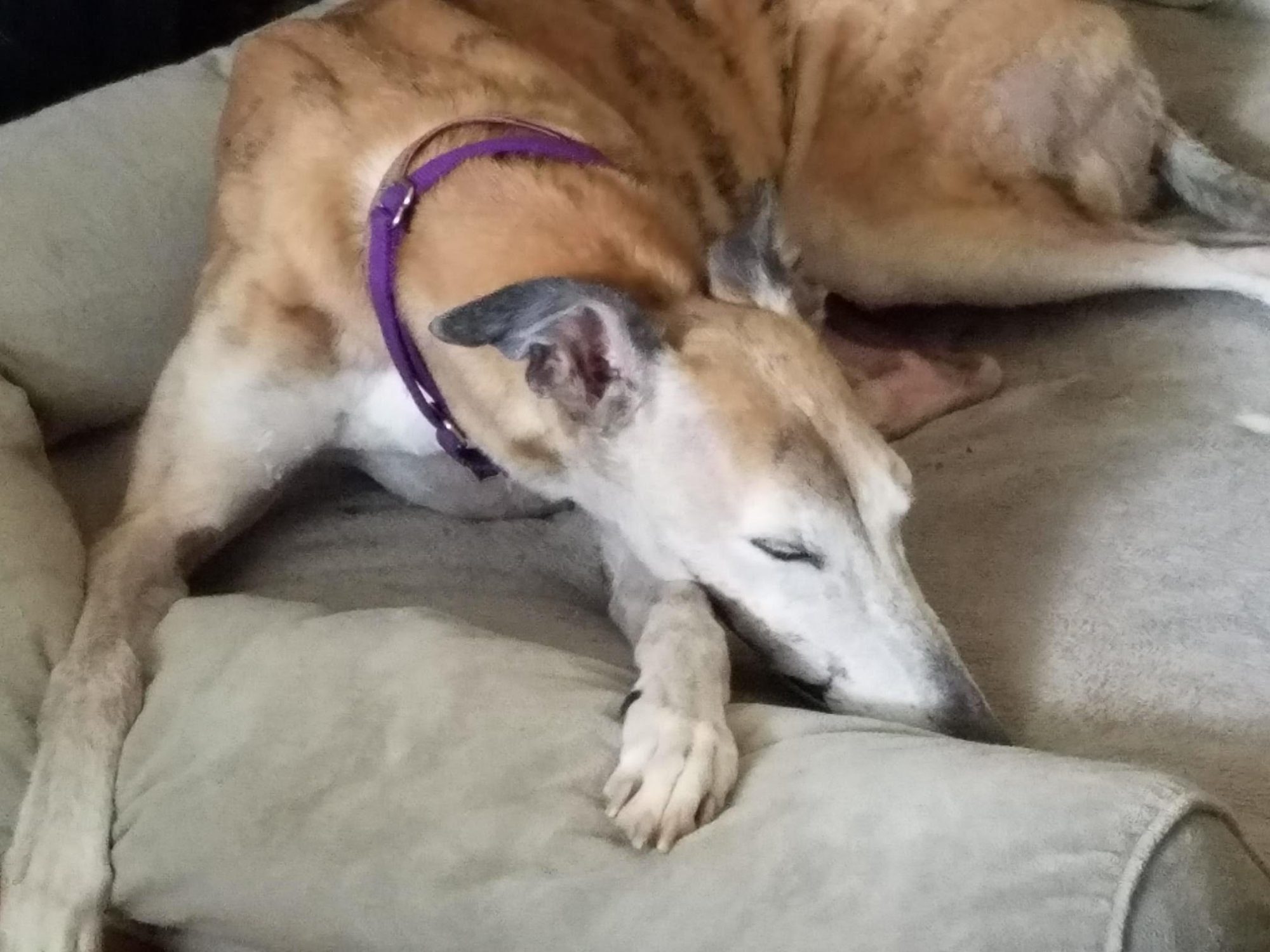
Her family vet did a “debulking” surgery to try and remove as much of the mass as possible without removing the lip itself. The tissue removed from Harper’s mouth was sent to the lab for biopsy. The biopsy revealed a mast cell tumor, which is unusual in the mouth.
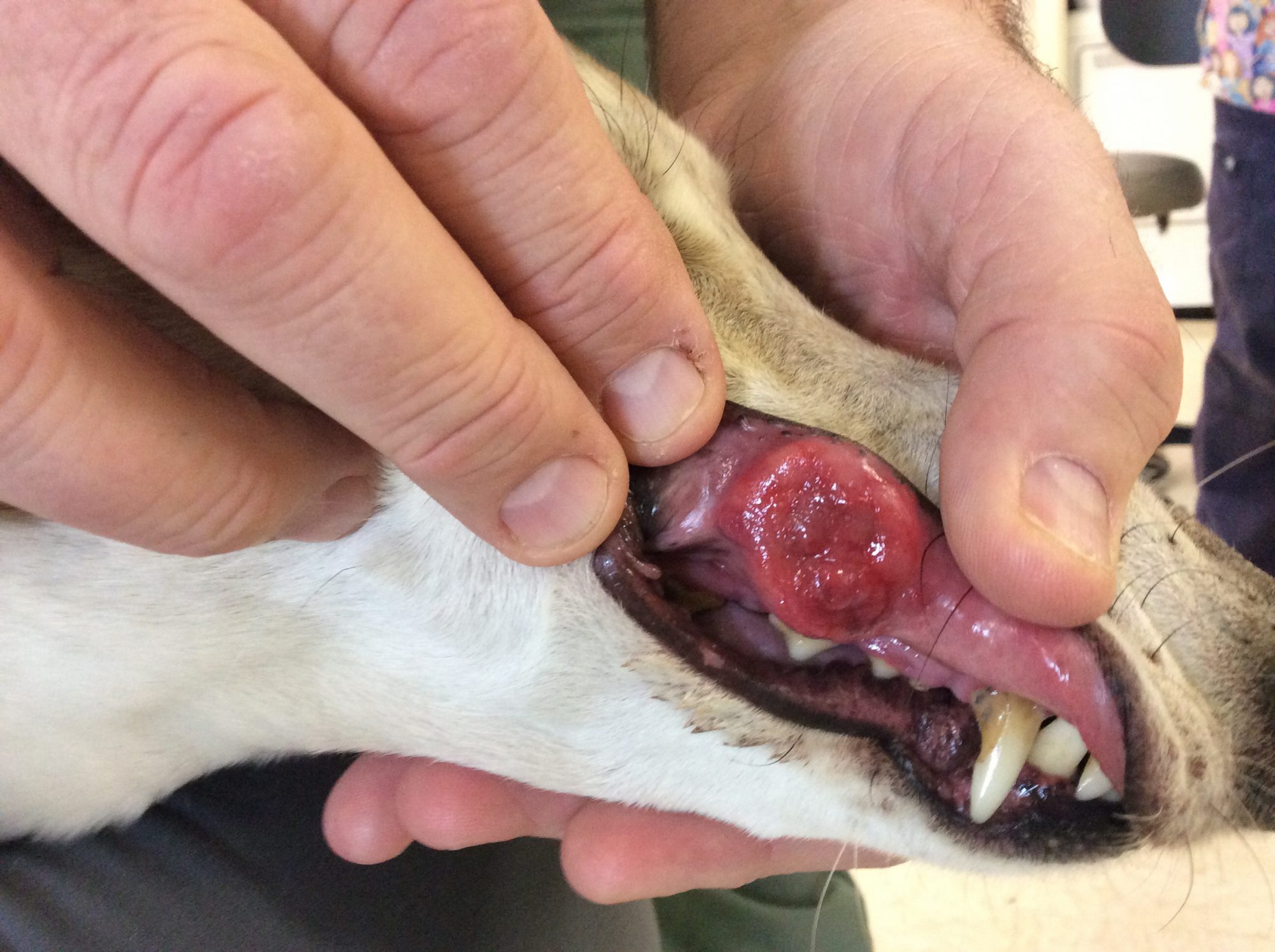
Mast cells are normal white blood cells we all have. They play a role in the body’s response to allergies and inflammation. Sometimes, they become cancerous, most commonly in the skin.
Occasionally, they can affect other body parts, such as the spleen, the liver or the intestine… or the mouth as in Harper’s case.
Complete removal of the mass is the ideal treatment. When we try to get “clean edges” in surgery, we call it getting “clean margins”.
More aggressive tumors or “dirty margins” (i.e. when the tumor was not completely removed) sometimes require additional treatment such as radiation or chemotherapy.
Unfortunately for Harper, due to the size and location of her mass, clear margins were not obtained with her first surgery. That’s when I was called in to perform a more invasive surgery, which would require reconstructive surgery.
To ensure clean margins were achieved this time around, I needed to remove a big chunk of Harper’s lip.
This left us with a hole I had to get creative to close.
I used what is called a skin flap. Using skin from the cheek, and by pulling it into the surgical area, I was able to reconstruct Harper’s upper lip (the pictures are a bit too graphic for this humble blog). There was some considerable pressure along the incision postop, which was a concern for healing. There was a chance the stitches would not hold up…
Harper recovered smoothly from anesthesia. She went home with instructions to keep her quiet and to prevent her from chewing on anything, including toys. The incision had to be protected at all time with a plastic cone (E collar).
About a week later, the biopsy was read as a mast cell tumor – no surprise there. The great news was that we were able to “get it all”, i.e. we had clean margins.
Three weeks later, Harper showed good healing, but I was concerned that the incision looked so crusty. Rather than aggravating the incision by removing the stitches and the scabs, we decided to leave the sutures in for an additional week.
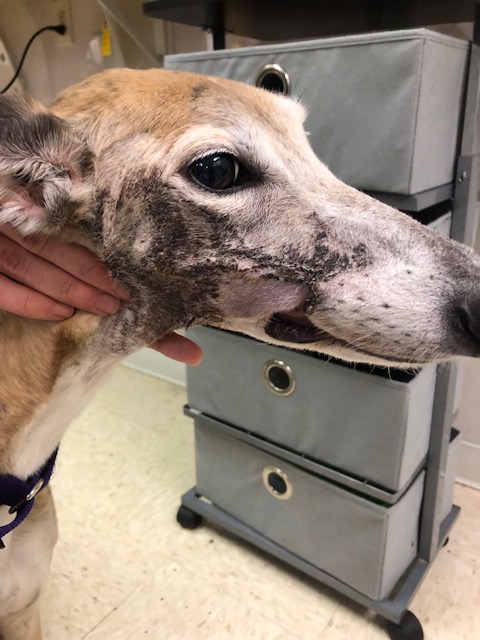
Harper was able to open and close her mouth without any issues, which was a huge relief. Her family vet was able to take a picture while she was yawning at the clinic!
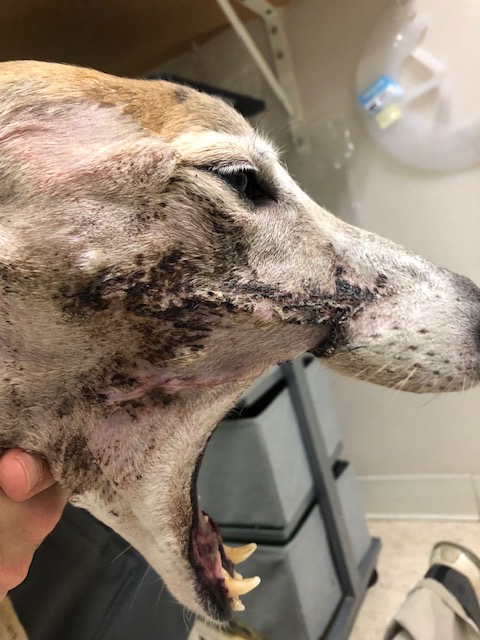
That showed us that Harper could fully open her mouth. It turn, it meant that she could play with chew toys and balls in the future.
One week later (1 month after surgery), the incision looked immensely better. The stitches were removed. And Harper could resume her normal activity.
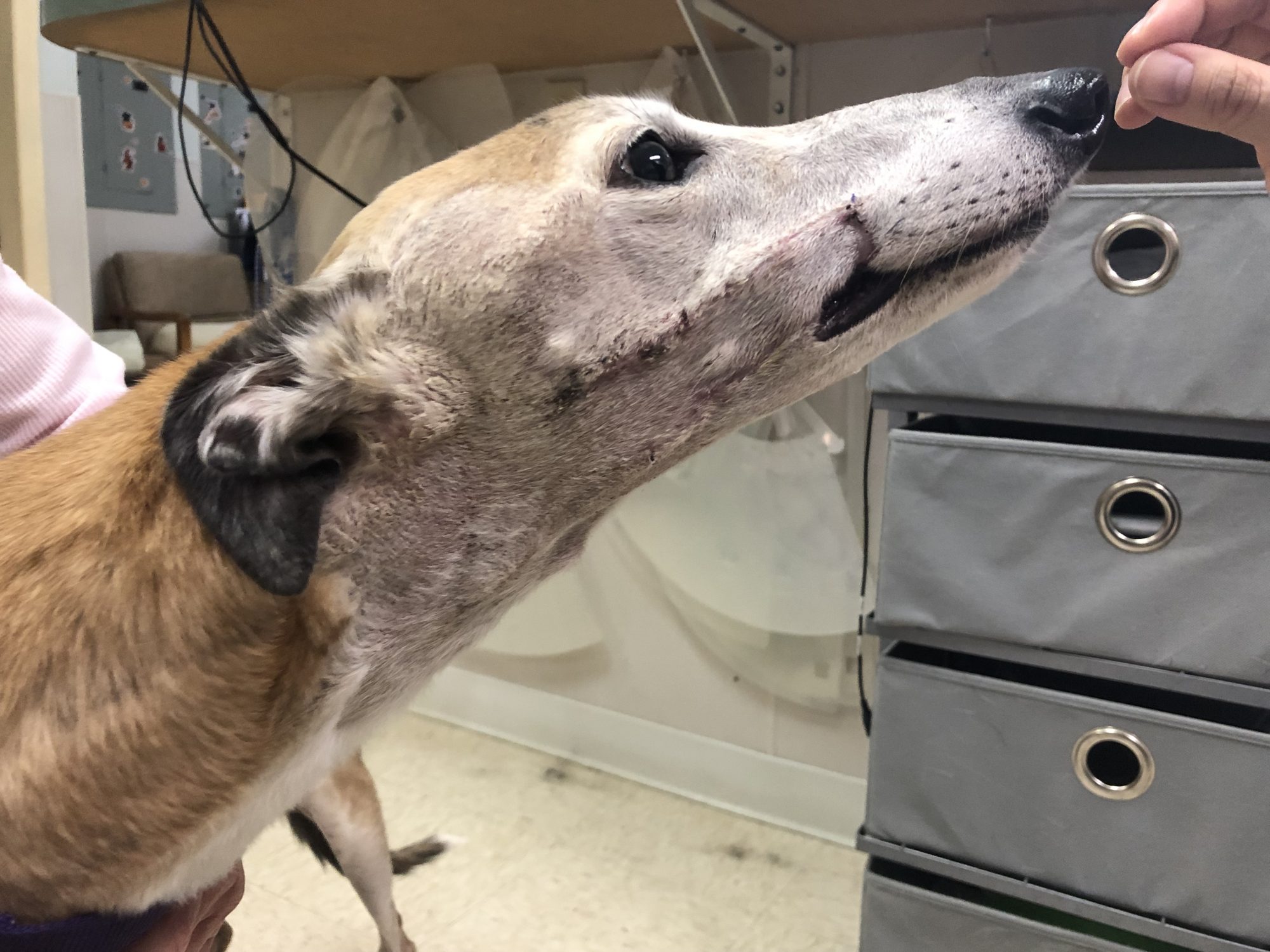
Harper’s mouth will be checked by her family vet during regular check-ups. She is still doing great 6 months after surgery.
Her owner GK wrote:
“Hello Dr. Zeltzman,
We wanted to share with you how happy we are with the outcome from Harper’s surgery.
She looks absolutely fantastic, with her scar only being approximately 1/2 inch long.
The healing process was a little rough in the beginning but with all the excellent instructions we were given we knew what to expect.
But overall it seemed to be a quick process and Harper is as good as new and back to her silly greyhound antics.
Thank you for taking such excellent care of our girl.”
Phil Zeltzman, DVM, DACVS, CVJ, Fear Free Certified

Dr. Phil Zeltzman is a traveling veterinary surgeon in Pennsylvania & New Jersey. An award-winning author, he loves to share his adventures in practice along with information about vet medicine and surgery that can really help your pets. Dr. Zeltzman specializes in orthopedic, neurologic, cancer, and soft tissue surgeries for dogs, cats, and small exotics. By working with local family vets, he offers the best surgical care, safest anesthesia, and utmost pain management to all his patients. Sign up to get an email when he updates his blog, and follow him on Facebook, too!
My coolest surgery last year!
Imagine my surprise when one of my practices asked me if I’d be willing to repair a broken bone in a fox!

Of course, I instantly replied YES!
A 2 year old fox had likely been hit by a car. He was found by a rescue and brought to the clinic. X-rays showed a fractured left humerus (the bone in the arm). It was repaired with a metal pin, which slipped out of the bone – twice.
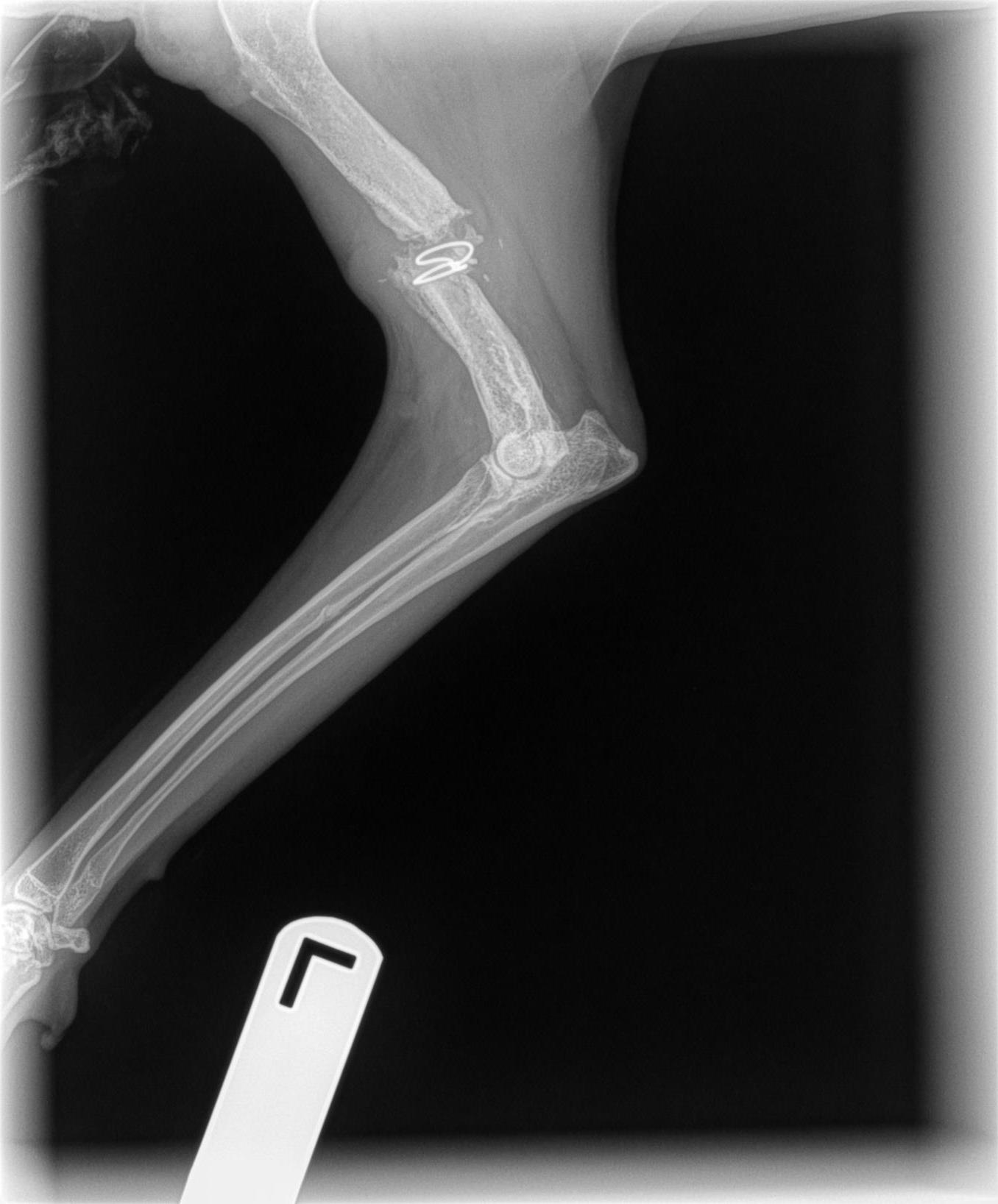
I was later called to the practice to repair the bone. The first thing I did is rename my new patient. “Case # 3781” didn’t sound very good. I thought that “Robin Hood” was more appropriate.
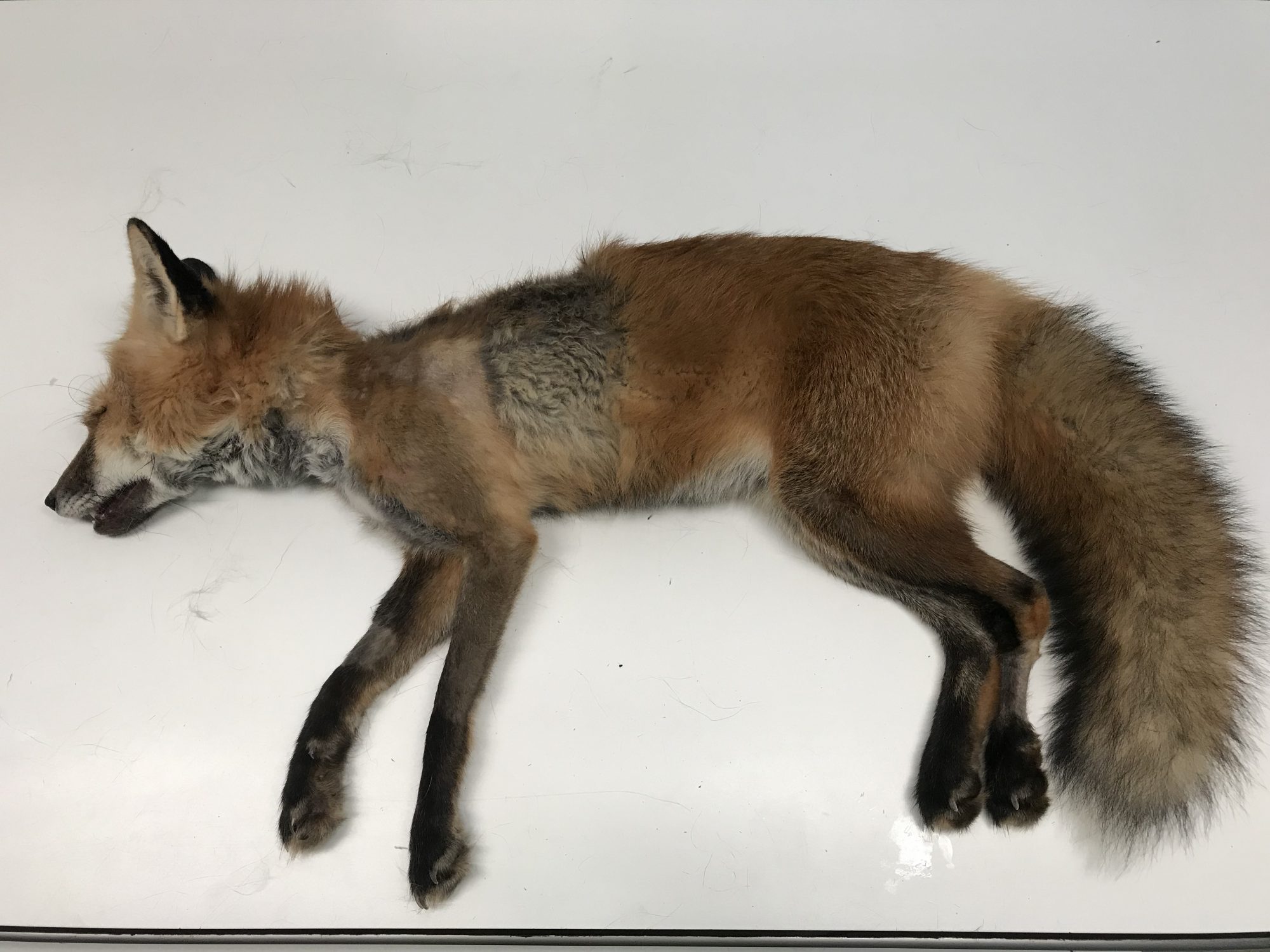
Fox sedated on the X-ray table
My amazing nurses treated him like a dog: IV catheter, IV fluids, pain medications, antibiotics – the works. Our fox friend was put under anesthesia and his beautiful red fur was clipped.
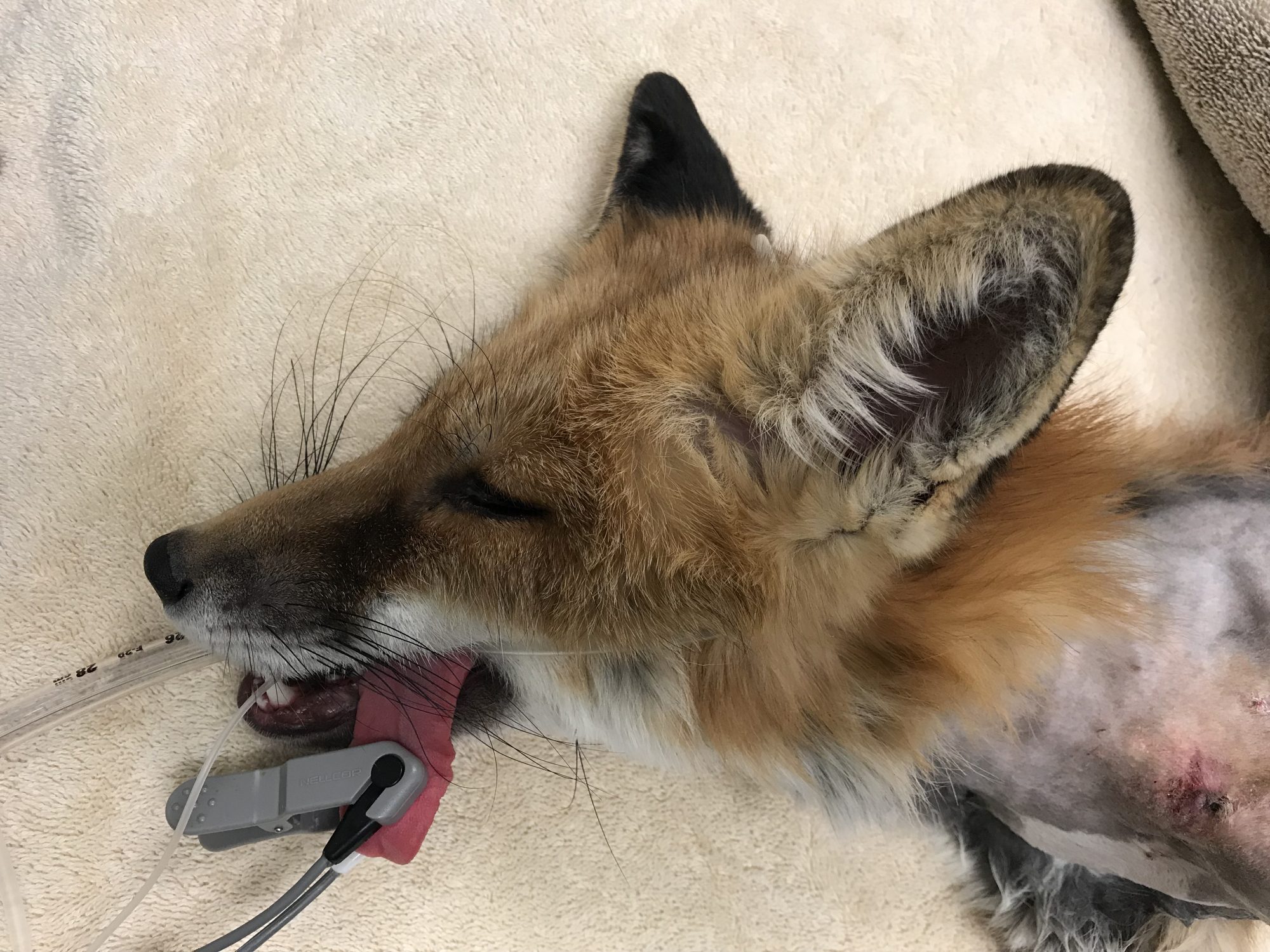
Then surgery started. Several months after the initial accident, there was a lot of scar tissue between the ends of the bone, which were not very healthy. During a more than 3 hour long surgery, the bone was repaired with a metal plate and 9 screws. A bone graft was added to speed up healing, since the fracture site was so unhealthy.
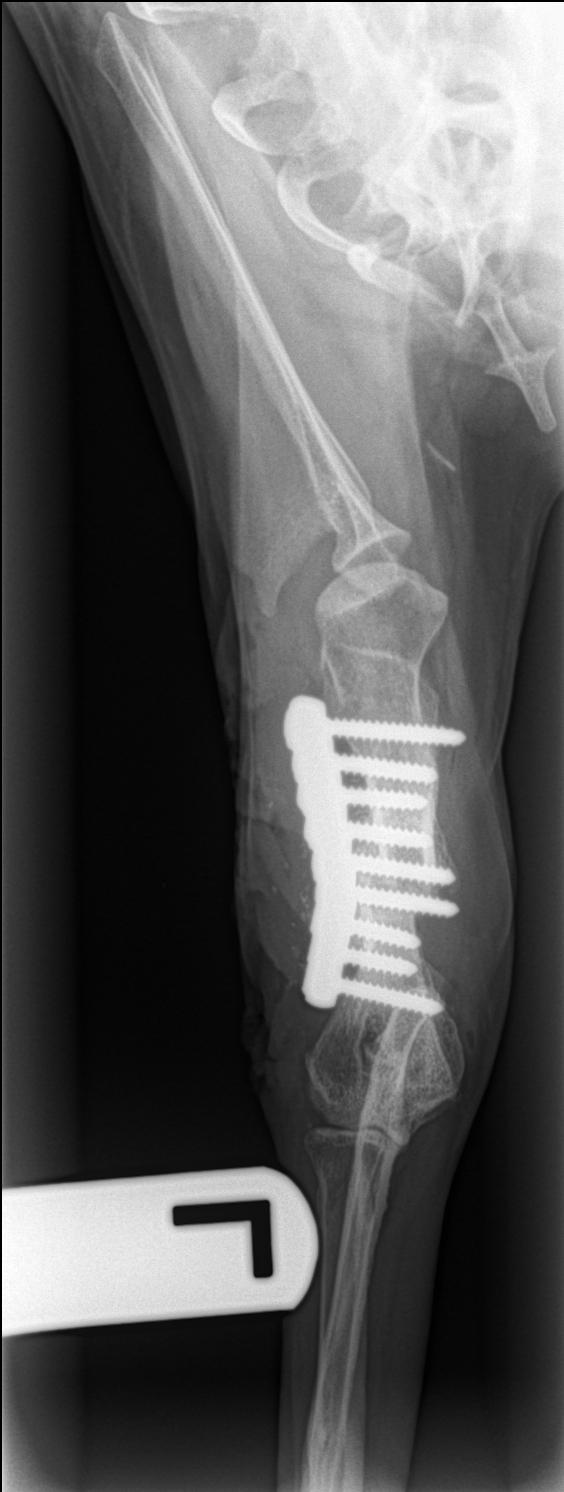
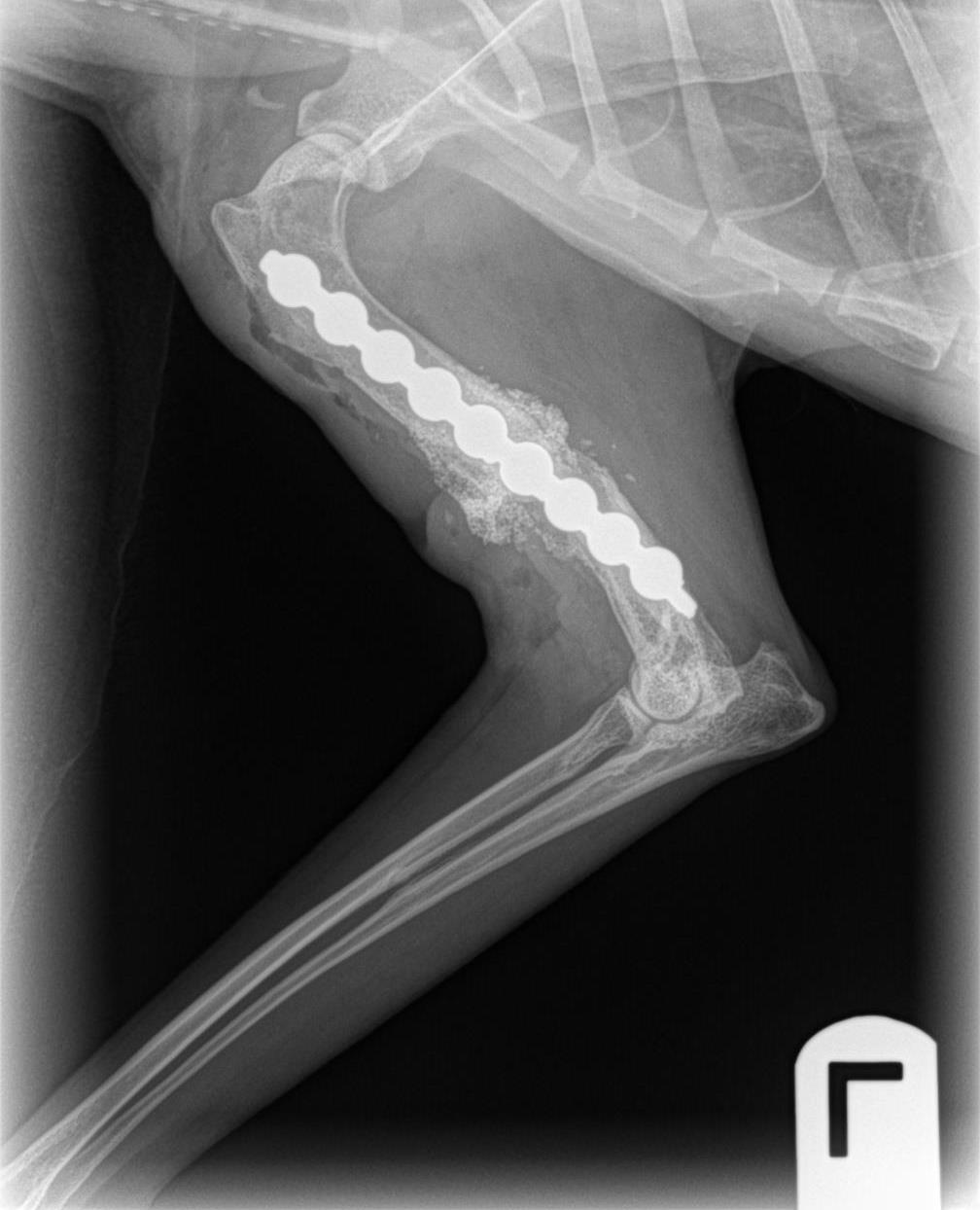
The fox went back to the rescue to heal in a small enclosure. Amazingly, he tolerated a “cone” (E collar) around his head so he wouldn’t lick the incision.
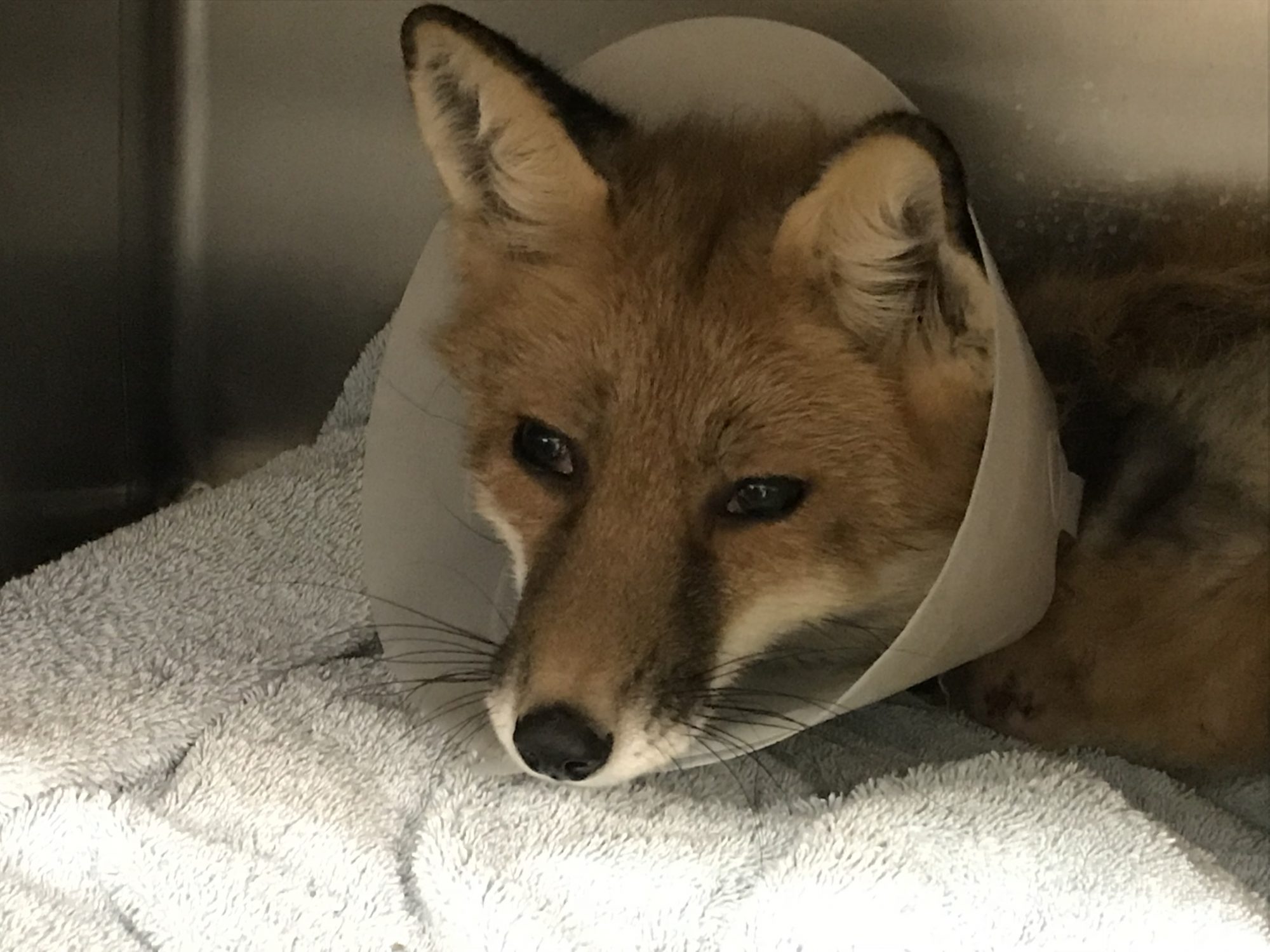
After a month, X-rays were taken under sedation. I was absolutely shocked to see that the bone looked completely healed. In a dog or a cat, it would have taken at least 2 months for such an old fracture to heal.
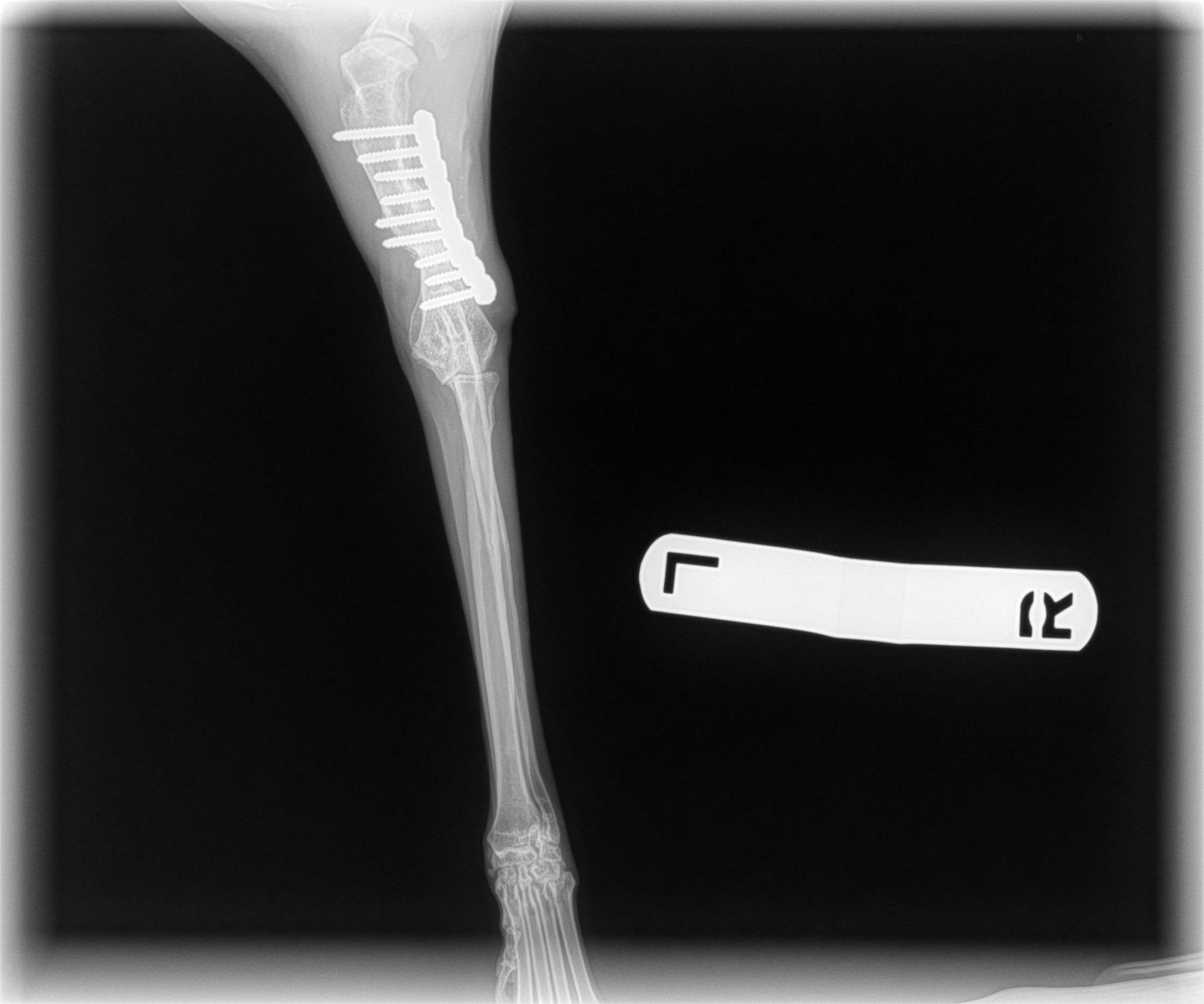
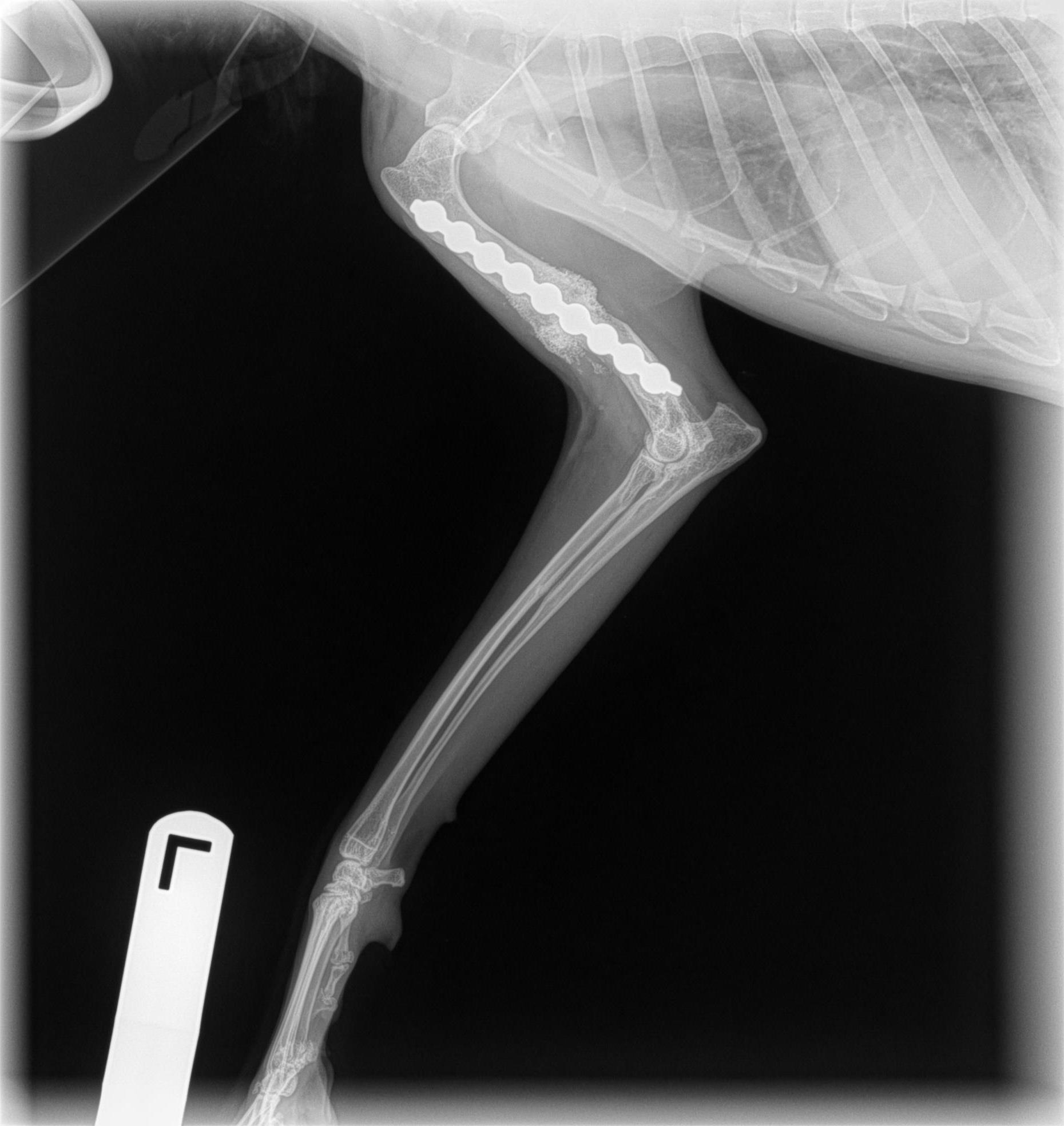
Since the goal was to release Robin Hood in the Wild, I thought that it would be prudent to confine him for another month.
After two months, more X-rays were taken. They confirmed that the bone was healed.
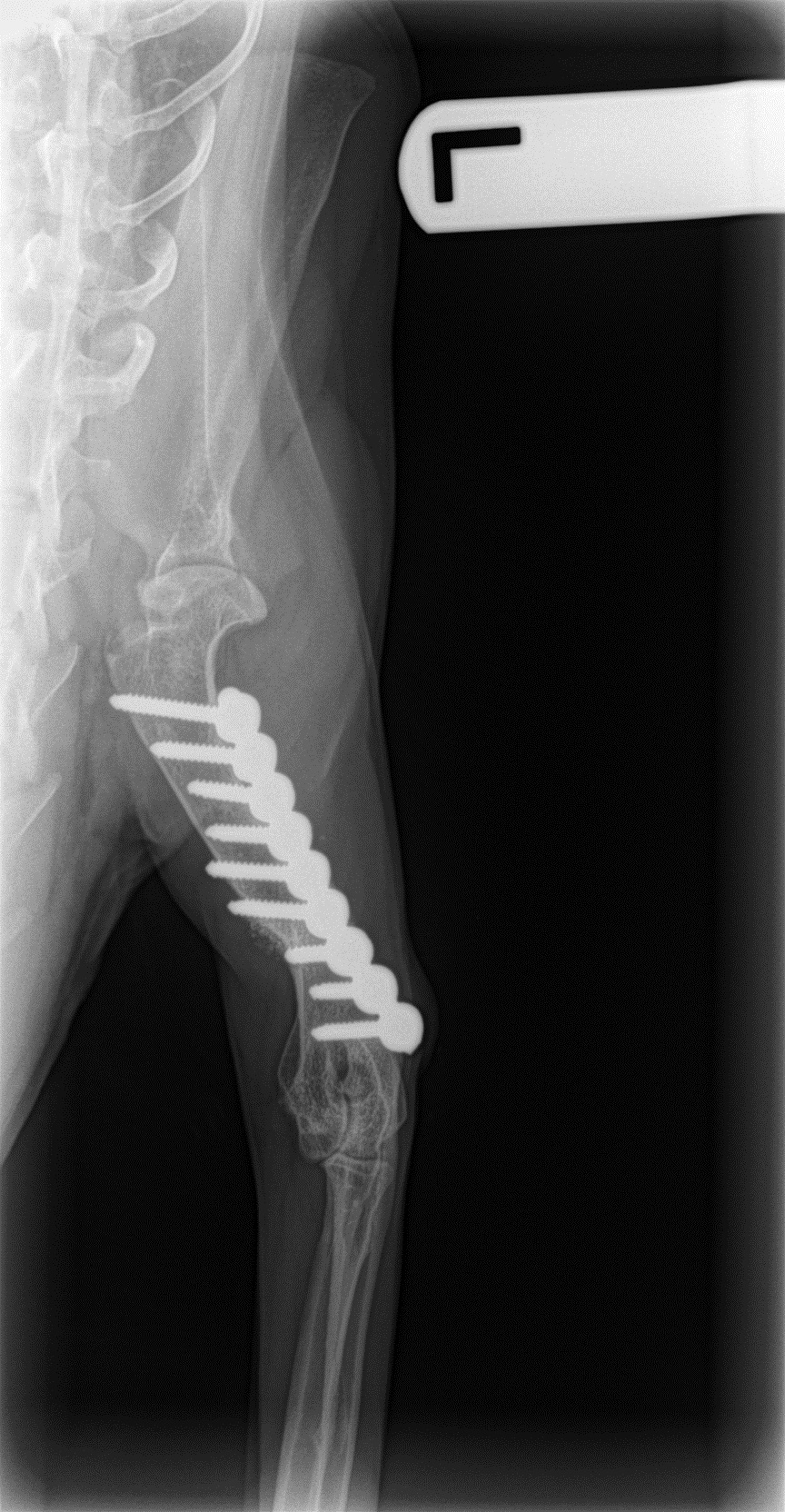
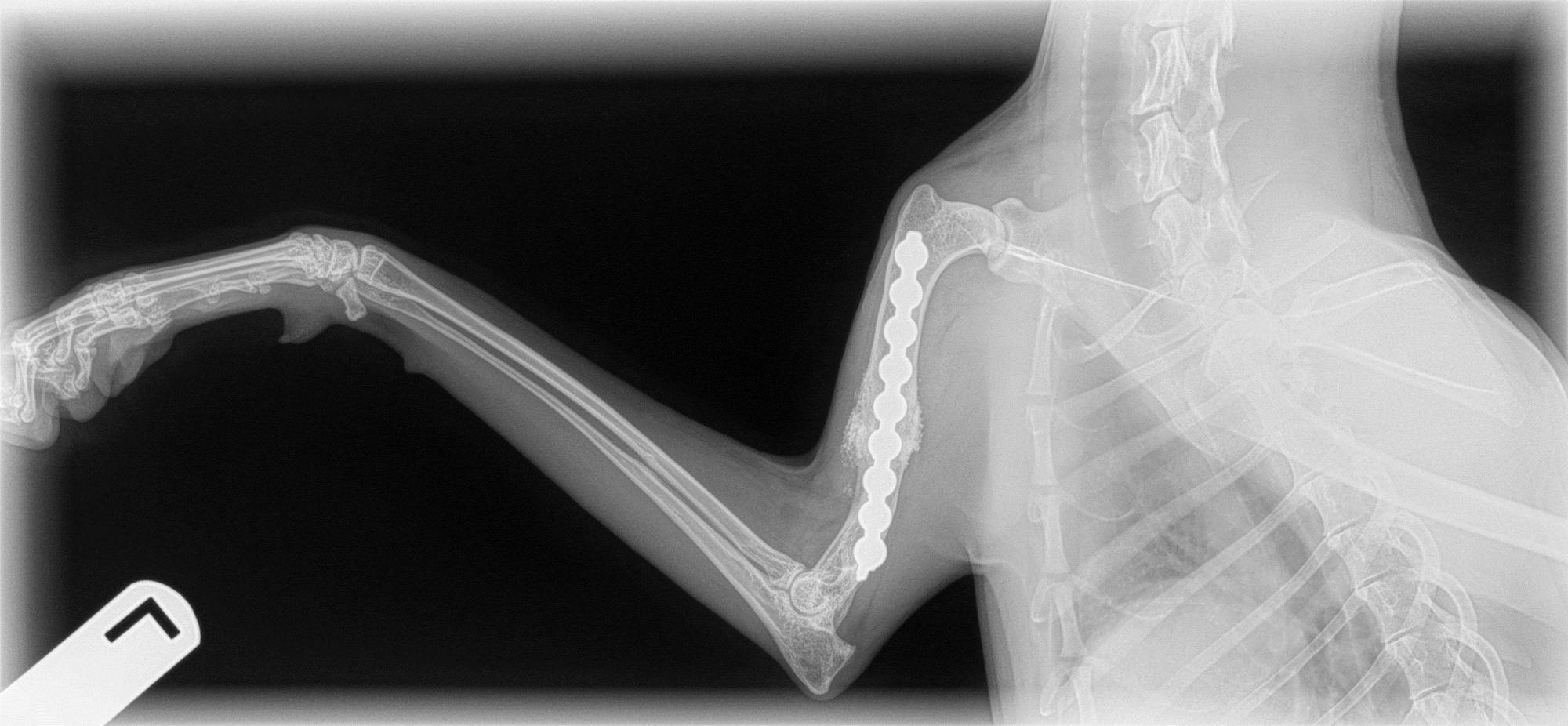
Because it was still winter (early 2019), the rescue wanted to make absolutely sure that Robin Hood would be able to feed himself in the Wild. After all, he had been fed by humans for the past few months, and we needed to play it safe.
Over the next few weeks, Robin Hood was given more and more freedom. He was then allowed to hunt to feed himself. Once he could do that, it was time to release him in the Wild.
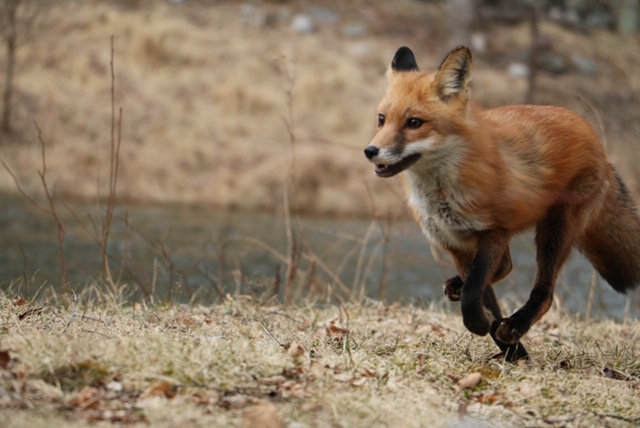
This short video shows this incredible and emotional moment.
https://www.youtube.com/watch?v=GY_ViY9x1dQ
Please keep in mind that handling wildlife requires special skills and permits. Although foxes are extremely cute, they cannot be treated like our domestic friends. In addition, some wild animals may have rabies, which is deadly.
Fortunately, Robin Hood didn’t have rabies and allowed generous humans to help him get back to the Wild.
I am very grateful to this rescue organization for their amazing dedication during this long recovery – and for allowing me to help Robin Hood.
Phil Zeltzman, DVM, DACVS, CVJ, Fear Free Certified

Dr. Phil Zeltzman is a traveling veterinary surgeon in Pennsylvania & New Jersey. An award-winning author, he loves to share his adventures in practice along with information about vet medicine and surgery that can really help your pets. Dr. Zeltzman specializes in orthopedic, neurologic, cancer, and soft tissue surgeries for dogs, cats, and small exotics. By working with local family vets, he offers the best surgical care, safest anesthesia, and utmost pain management to all his patients. Sign up to get an email when he updates his blog, and follow him on Facebook, too!
Hazel survives a horrible accident
Hazel, a very cute 6 month old chocolate Lab, was hit by a family member’s pickup truck in her own driveway…
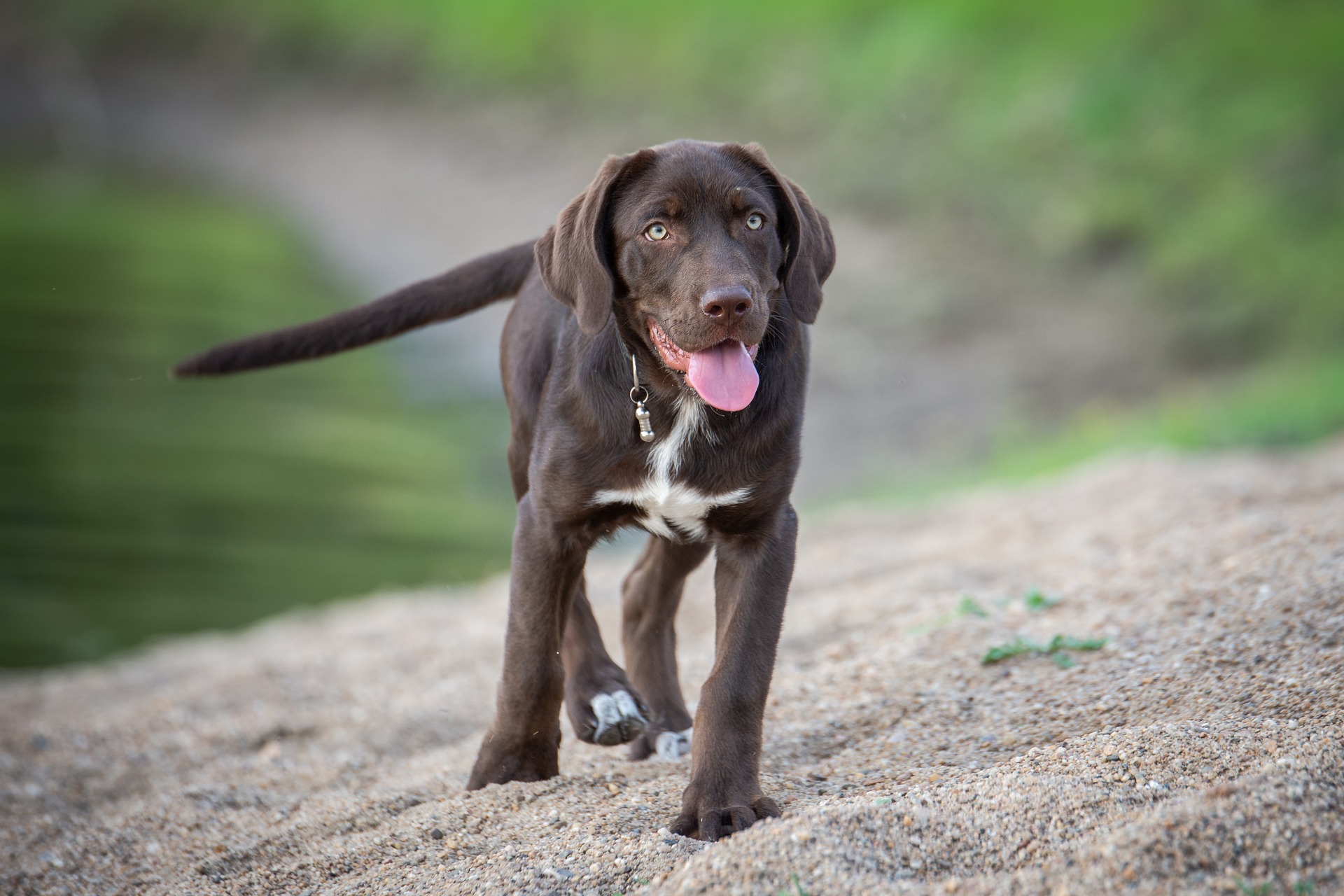
You may want to skip the next sentence & jump to the next paragraph if you are a sensitive soul… You have been warned… Her owner said the car ended up being “parked on Hazel.”
After everybody calmed down, the end result was a pup in severe pain, holding a back leg up and a big skin laceration.
Hazel was rushed to her family vet. X-rays showed a fracture of the end of her femur (thigh bone).
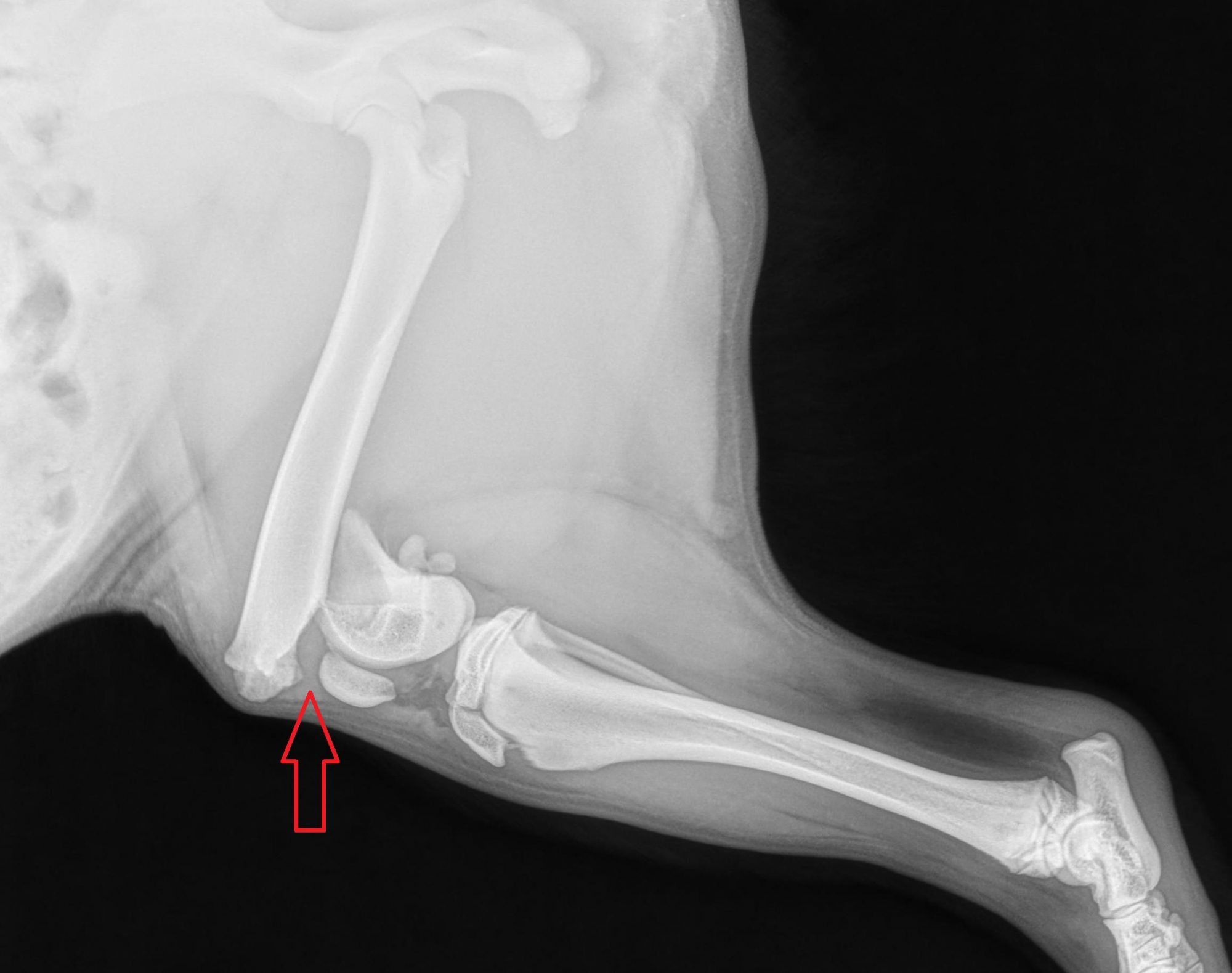
Miraculously, her chest & belly X-rays and the rest of her physical exam were normal. Her preop blood work was also normal.
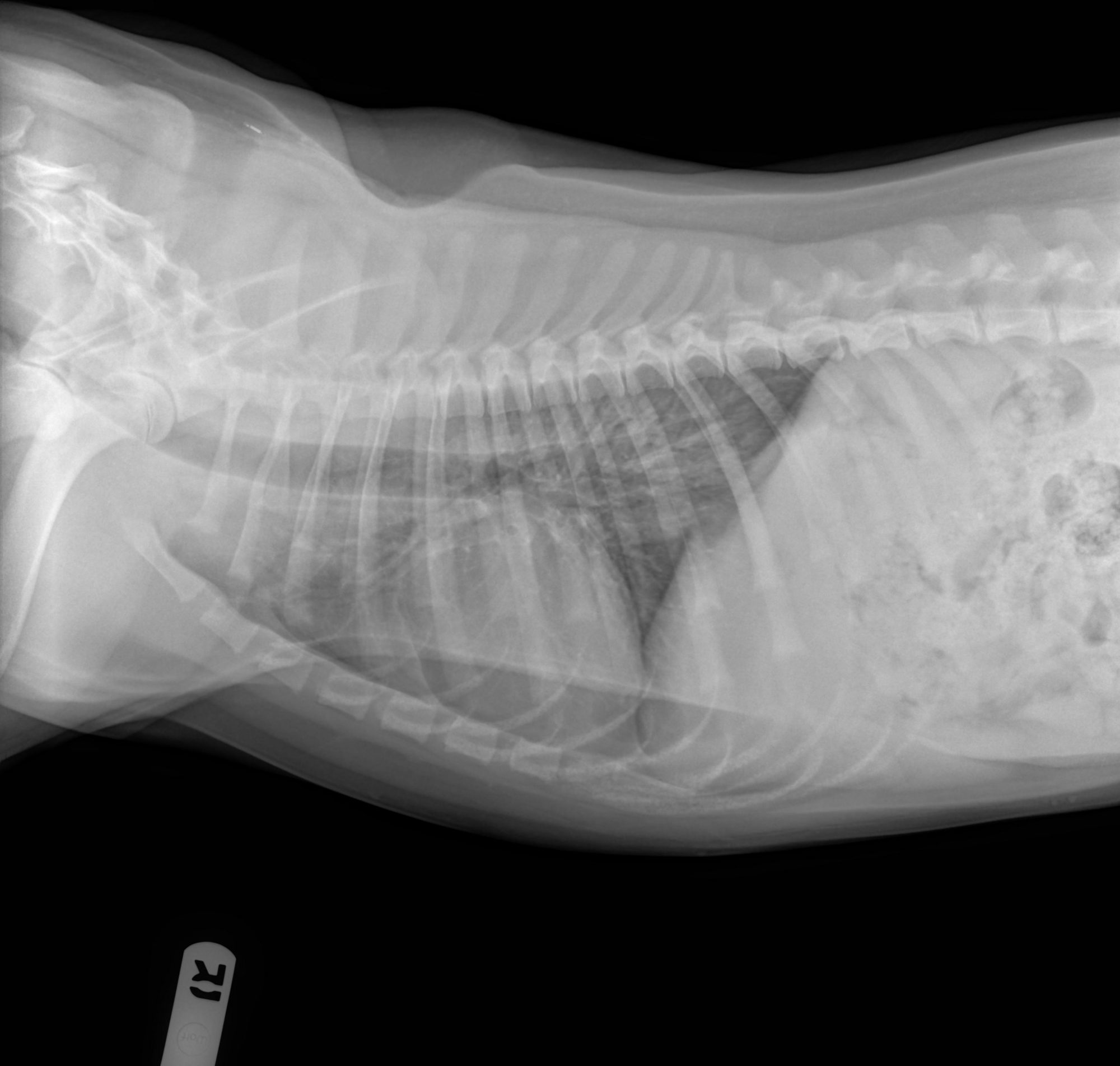
I reviewed the X-rays and was asked if I could help put this poor puppy back together. She was a good candidate for anesthesia and surgery to repair the broken bone. So later that day, Hazel was anesthetized and prepped for surgery.
Realigning the 2 ends of the broken bones several days after the accident was the toughest part. One piece was literally impaled into the other. But we eventually succeeded in realigning the bone nicely.
Surgery involved placing 4 pins to stabilize the fracture.
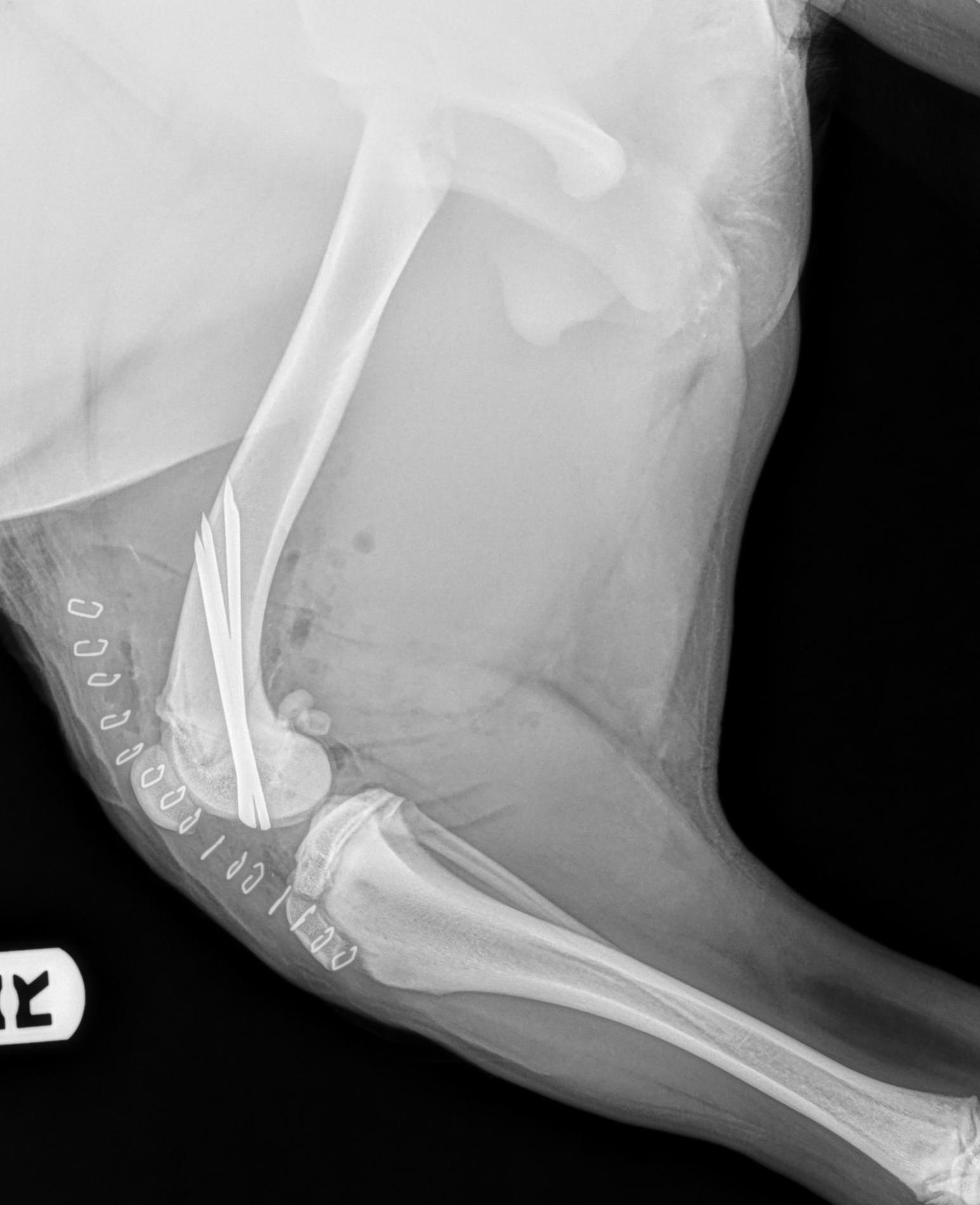
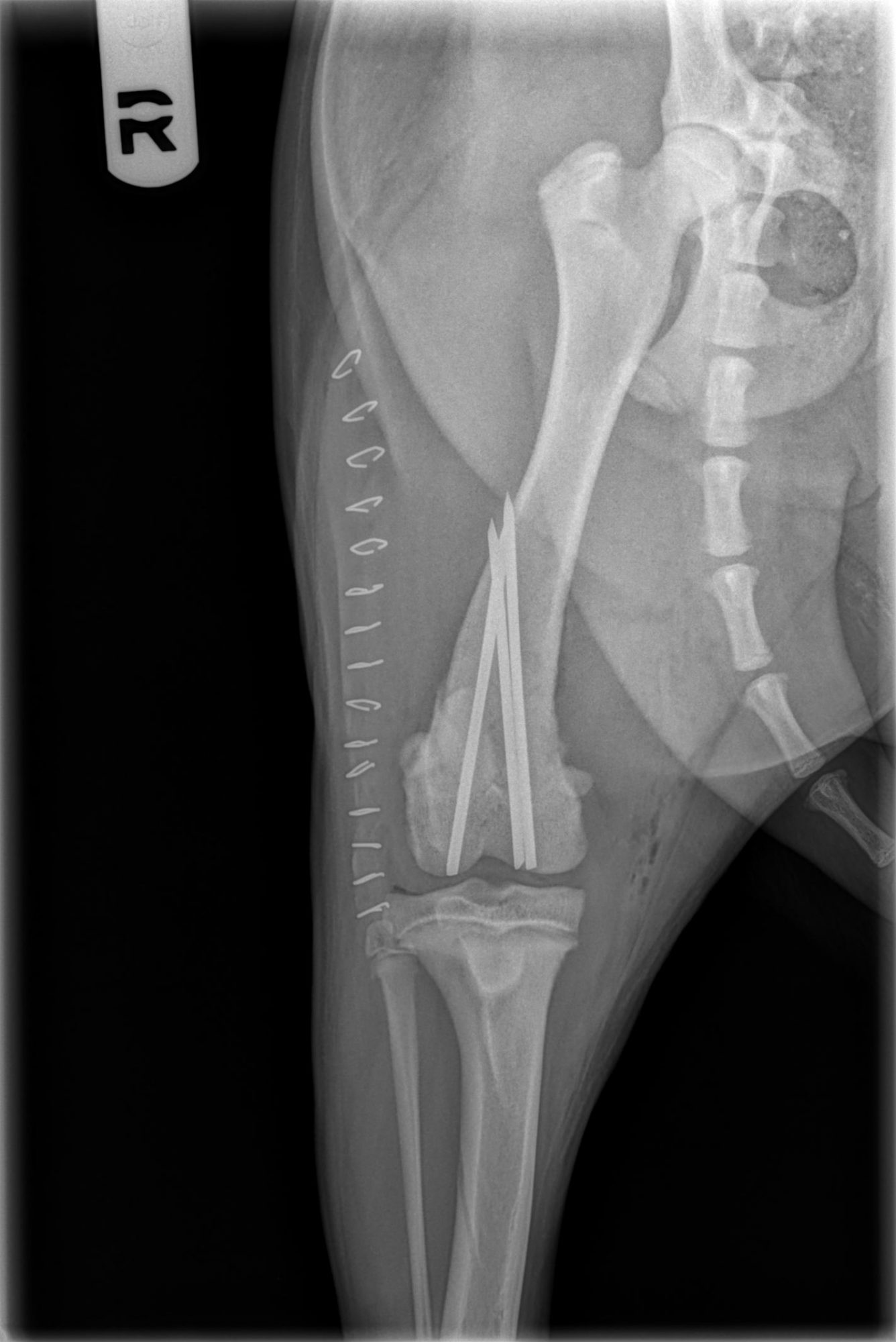
Hazel’s postop care required giving pain medications and antibiotics, 2 weeks in a cone (E collar) and 6 weeks of very strict confinement to a small room.
Six weeks after surgery, her X-rays showed nice healing of the fracture. It is now time to slowly increase her activity over the next 4 weeks so she can resume her crazy happy life of running, playing and catching balls.
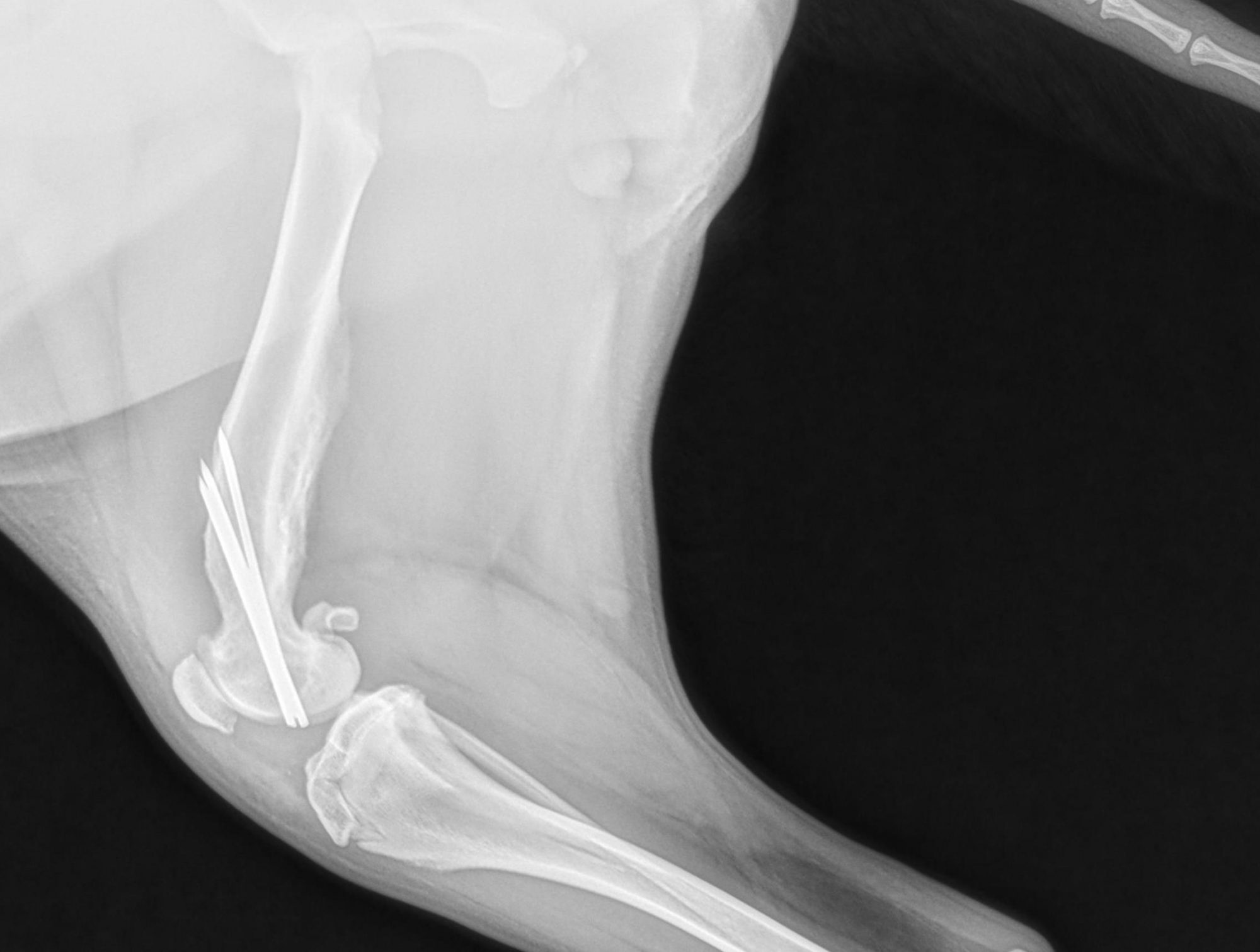
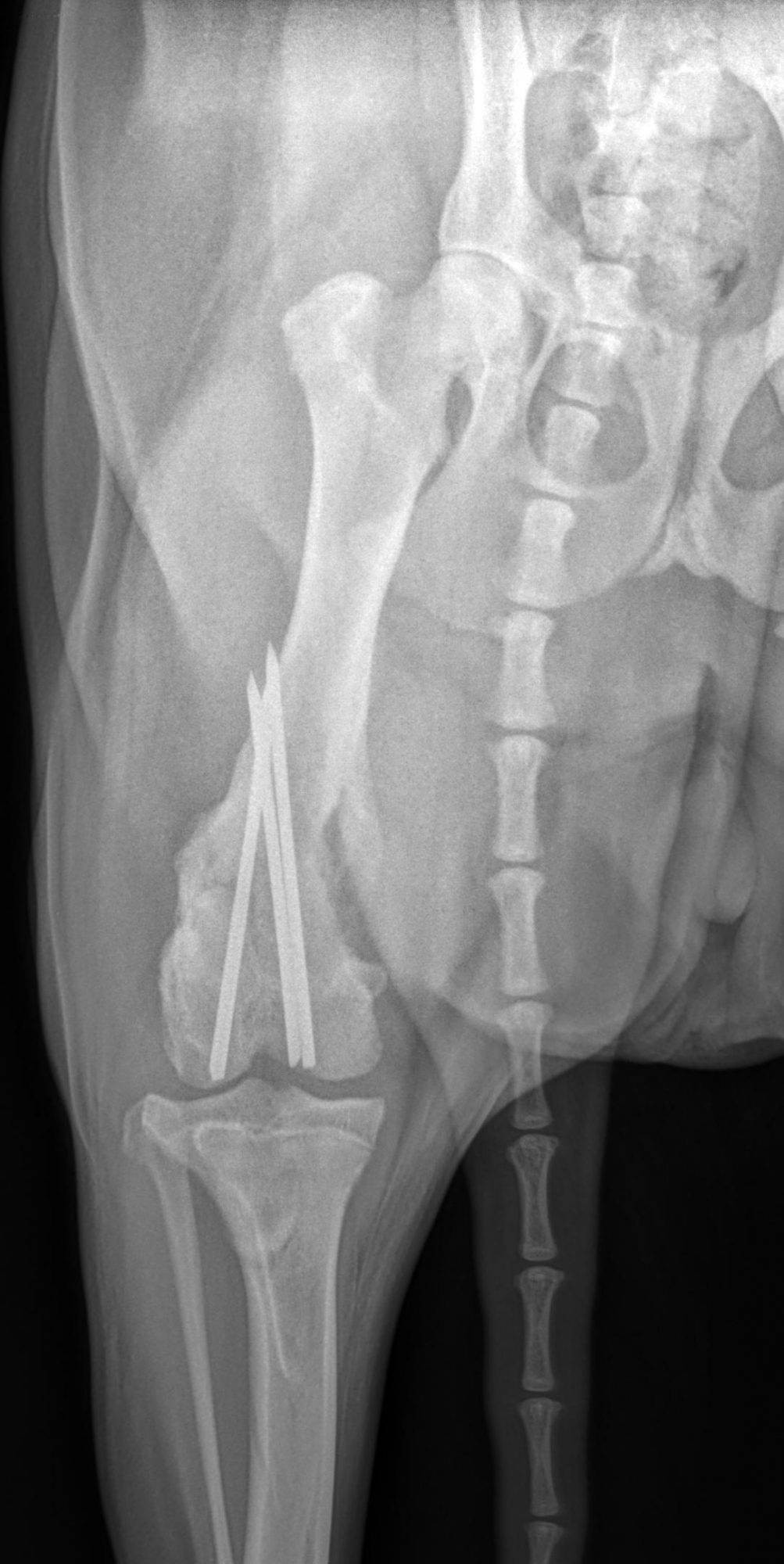
Sadly, this is not an unusual story. Many pets (cats and dogs) are hit by a car in their own driveway (and beyond, of course). Please be safe. The best place for a pet is indoors, especially when there is a moving vehicle in the driveway.
Hazel, despite her ordeal, got lucky. All of her wounds and her fracture were fixable and healed nicely.
Her owner was very happy to report that she was ready to just be a puppy again. “I couldn’t be happier with her progress” he concluded. Now little Hazel can enjoy life again.
Phil Zeltzman, DVM, DACVS, CVJ, Fear Free Certified

Dr. Phil Zeltzman is a traveling veterinary surgeon in Pennsylvania & New Jersey. An award-winning author, he loves to share his adventures in practice along with information about vet medicine and surgery that can really help your pets. Dr. Zeltzman specializes in orthopedic, neurologic, cancer, and soft tissue surgeries for dogs, cats, and small exotics. By working with local family vets, he offers the best surgical care, safest anesthesia, and utmost pain management to all his patients. Sign up to get an email when he updates his blog, and follow him on Facebook, too!
Joshua’s story: taking pain seriously
Joshua, a sweet 3 year old Beagle, had been seen by 3 different family vets to find the source of his pain.
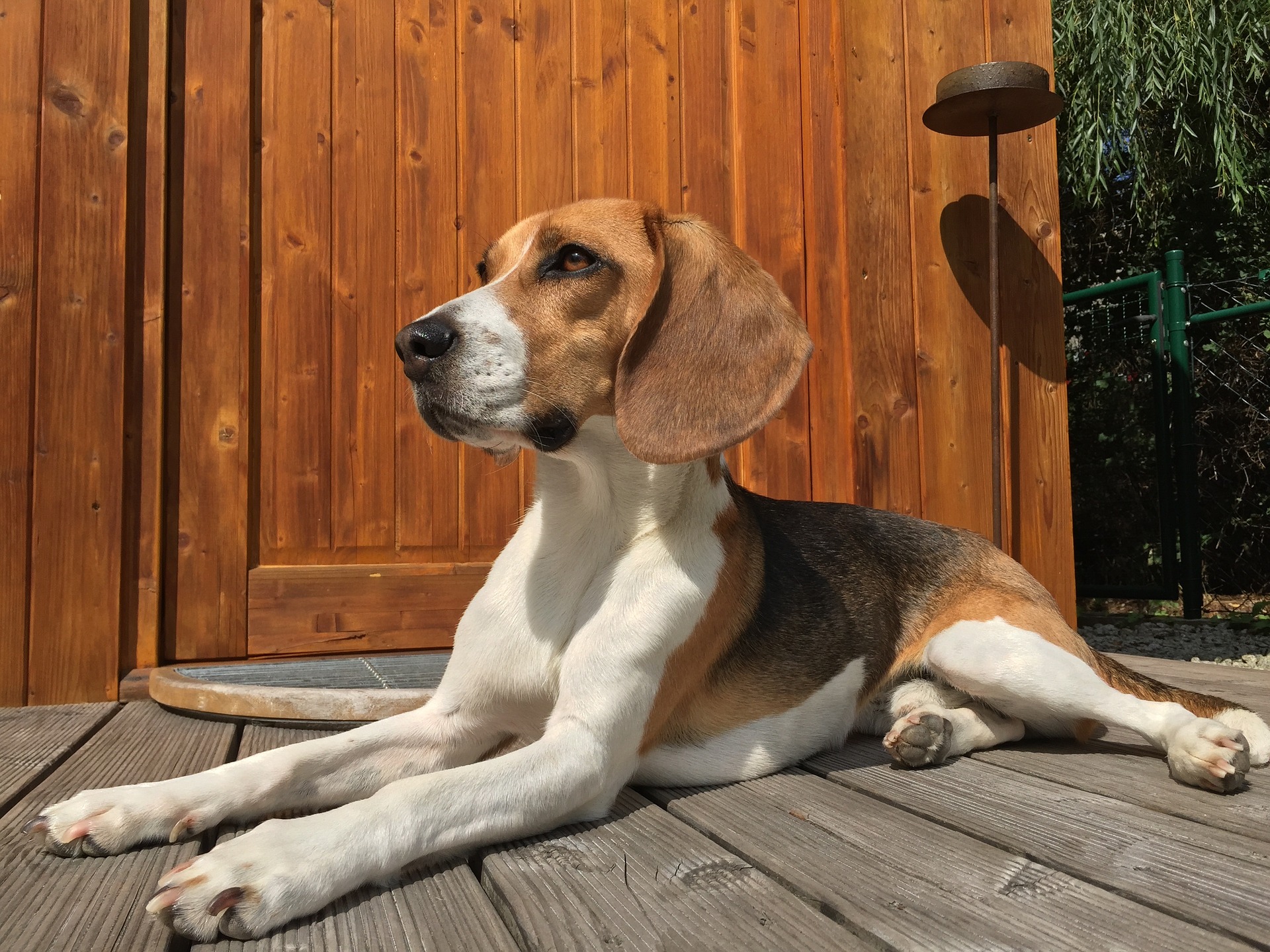
His owner described bizarre signs: trouble wagging and lifting his tail; difficulty urinating and defecating.
Joshua would occasionally chew at his back leg. “Because he was in pain” his owner thought. But nobody would take her seriously.
Overall, the condition seemed to get worse with time, despite several medication trials.
Beagles are prone to slipped discs, but Joshua did not fit the picture. His neurological exam was totally normal except for pain in the lower spine.
That’s when I met Joshua. His physical exam was normal, except that he had mild and consistent pain in his lower spine. Stretching his tail over his back would also cause pain. There were no other significant findings.
I wanted to take Joshua’s pain seriously, so I had a heart-to-heart with his owner. There was clearly something wrong with Joshua. An MRI was the next logical step… and a big leap of faith. His owner consented to it.
The MRI report described that young Joshua (again, a 3 year old) had a mass, most likely a tumor, in his lower spine (between lumbar vertebrae L5 and L6). Even worse, the tumor seemed to be attached to his spinal cord.
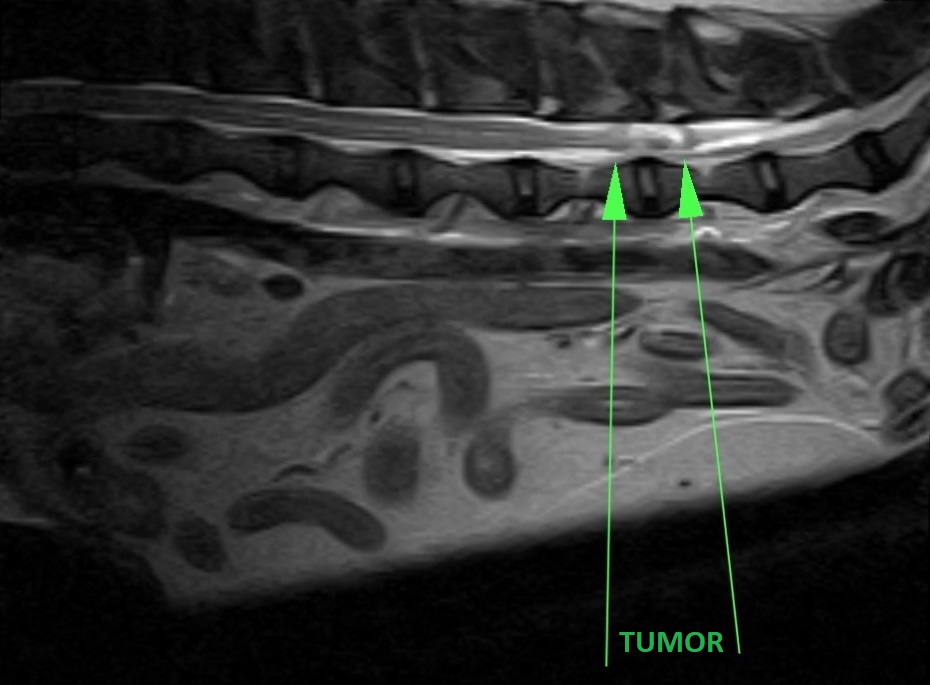
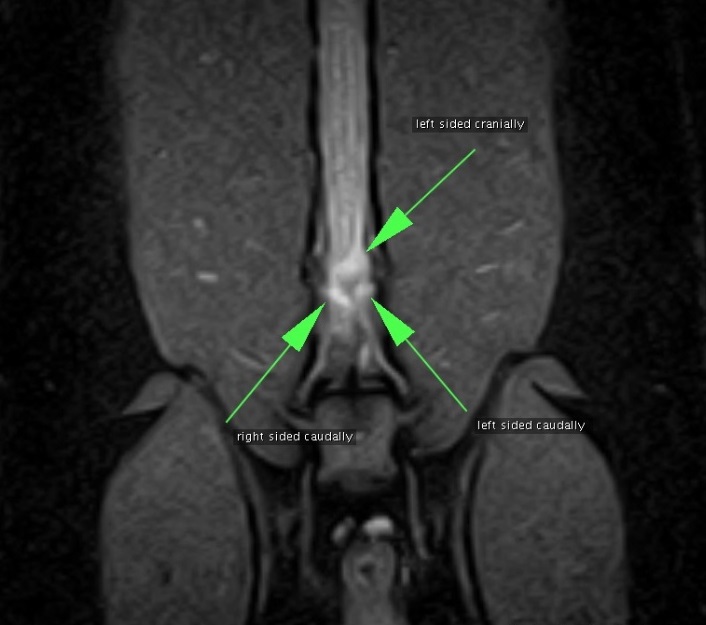
Because she really wanted to help her dog, Joshua’s owner elected surgery. We found exactly what the MRI report had described.
The tumor, which was almost 1 inch in length, could not be completely removed.
WARNING: THE NEXT PICTURE IS GRAPHIC !!!
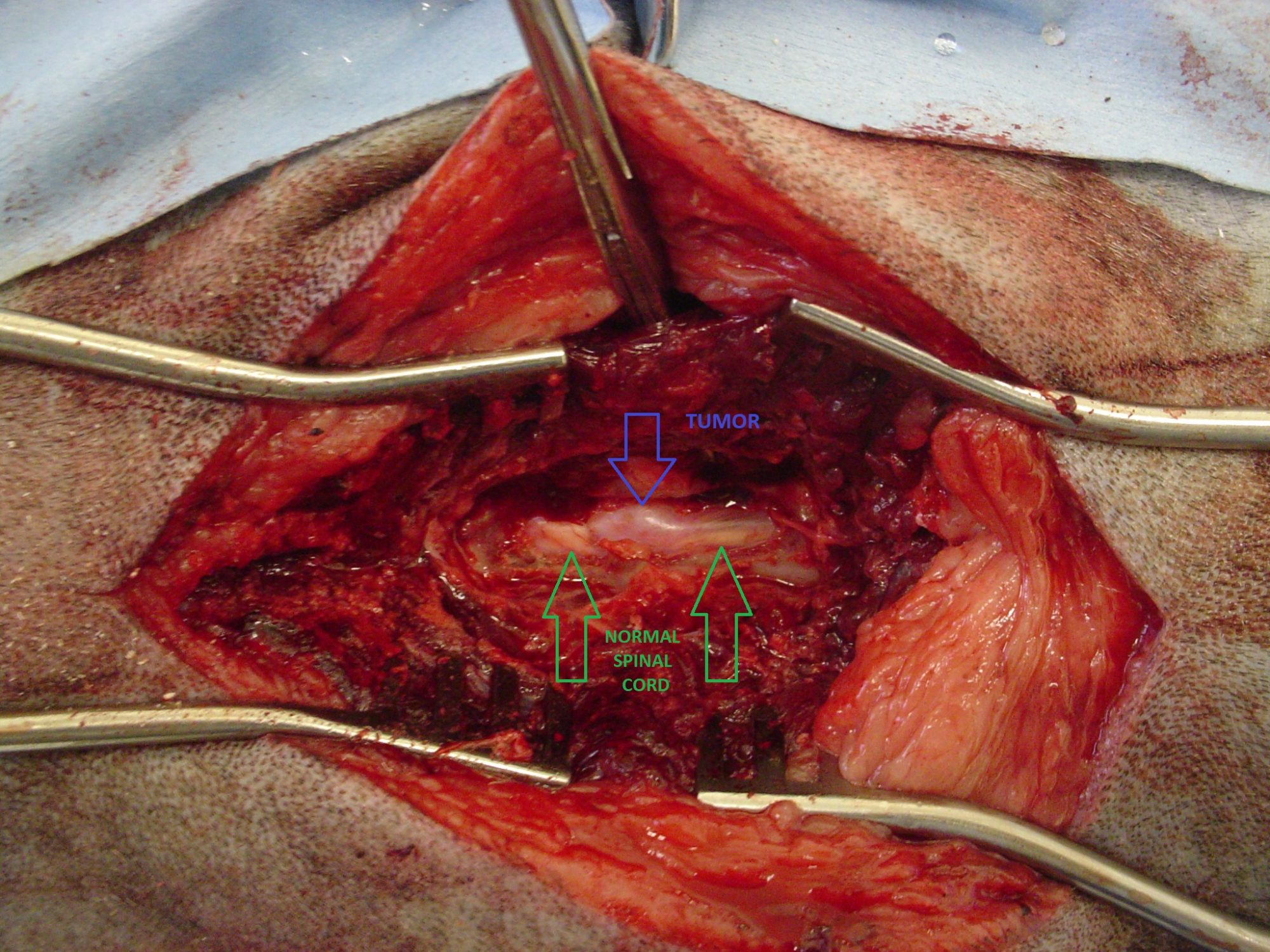
Therefore, we carefully took 3 biopsies of the mass, which in effect, decreased the size of the tumor by two thirds. So we “debulked”‘ the mass, i.e. we removed the bulk of it.
Removing more tumor would have put Joshua’s ability to walk in serious jeopardy.
Spinal surgery is very delicate, so we typically expect worsening of the signs initially. Miraculously, just a few hours after surgery, Joshua stood up and walked! He went home a couple of days after surgery.
One week after surgery, the biopsy came back: Joshua had a bizarre type of cancer called chondrosarcoma, which is an aggressive cancer of cartilage. Luckily, it was slow-growing, or “low grade.”
Two weeks after surgery, Joshua came back to the clinic for staple removal.
His owner was thrilled by his progress, since he had no sign of pain anymore. He was now able to lift and wag his tail. His neurological exam was completely normal. The only concern was occasional fecal incontinence, which we are trying to control with a special diet.
Beyond surgery, there is no good treatment for a “low-grade” chondrosarcoma of the spinal cord. Neither chemotherapy nor radiation therapy is a good option. However, Joshua might benefit from low doses of cortisone.
As your pet’s best advocate, you need to keep pushing until you get the answers you and our pets deserve. If you are not satisfied with the answers you’re getting, you owe it to them to ask more questions, to demand better answers, and, if needed, to be referred to a specialist.
As I always say, “pain is not acceptable.” We have multiple ways to decrease pain, which may or may not involve medications.
Joshua is a perfect example of this philosophy: his owner kept pushing until she found somebody who took her seriously.
This may seem to be a sad story, and it certainly is in a way. But Joshua’s owner and I would rather look at the glass half full: he is currently pain-free and happy, and his owner enjoys her pain-free dog… one day at a time.
Phil Zeltzman, DVM, DACVS, CVJ, Fear Free Certified

Dr. Phil Zeltzman is a traveling veterinary surgeon in Pennsylvania & New Jersey. An award-winning author, he loves to share his adventures in practice along with information about vet medicine and surgery that can really help your pets. Dr. Zeltzman specializes in orthopedic, neurologic, cancer, and soft tissue surgeries for dogs, cats, and small exotics. By working with local family vets, he offers the best surgical care, safest anesthesia, and utmost pain management to all his patients. Sign up to get an email when he updates his blog, and follow him on Facebook, too!
What is a TRUE emergency?
When should you rush to your family vet? When should you go to the emergency clinic? When is it safe to wait until the next day?
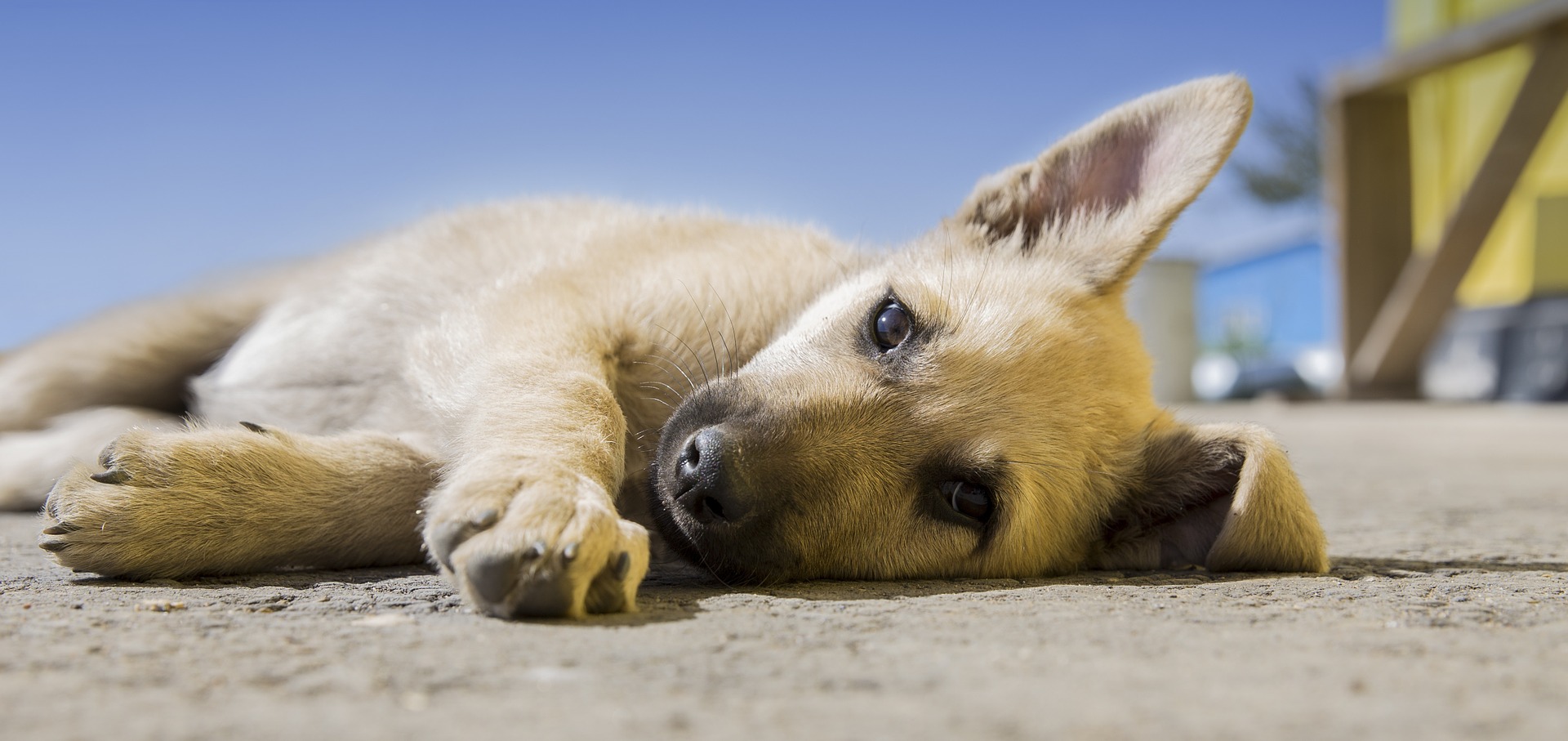
Here is a list of 13 true emergencies that require immediate vet care, day or night, week day or week end*.
- Severe bleeding or bleeding that doesn’t stop within 5 minutes.
- Choking, difficulty breathing or nonstop coughing and gagging.
- Bleeding from nose, mouth or rectum; coughing up blood; blood in urine.
- Inability to urinate or defecate, or obvious pain or straining while eliminating.
- Injuries to an eye.
- Your pet ate or drank something poisonous (antifreeze, xylitol, chocolate, rat poison etc.).
- Seizures and/or staggering and/or paralysis.
- Fractured bones or severe lameness.
- Obvious signs of pain or extreme anxiety.
- Heat stress or heatstroke.
- Severe vomiting or diarrhea – more than two episodes in a 24-hour period, or either of these combined with obvious illness or any of the other problems listed here.
- Refusal to drink for 24 hours or more.
- Unconsciousness.
The bottom line is that ANY concern about your pet’s health warrants, at a minimum, a call to your family vet.
Phil Zeltzman, DVM, DACVS, CVJ, Fear Free Certified
* This list was compiled by the American Veterinary Medical Association.

Dr. Phil Zeltzman is a traveling veterinary surgeon in Pennsylvania & New Jersey. An award-winning author, he loves to share his adventures in practice along with information about vet medicine and surgery that can really help your pets. Dr. Zeltzman specializes in orthopedic, neurologic, cancer, and soft tissue surgeries for dogs, cats, and small exotics. By working with local family vets, he offers the best surgical care, safest anesthesia, and utmost pain management to all his patients. Sign up to get an email when he updates his blog, and follow him on Facebook, too!

